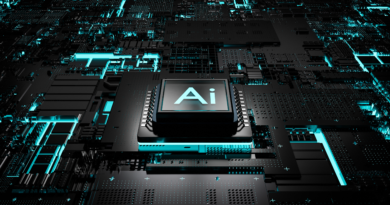Better Semiconductor Stock: Nvidia or Advanced Micro Devices – The Globe and Mail
In the battle for chip supremacy, two of the top companies battling it out are Nvidia(NASDAQ: NVDA) and Advanced Micro Devices(NASDAQ: AMD). Over the past five years, both stocks have been strong performers. AMD is up over 433% during that stretch, which is outstanding. However, that return pales in comparison to the over 3,000% gain in Nvidia’s stock.
Nvidia has been the better stock during the past five years, but which stock will likely outperform over the next five?
At the moment, the buildout of artificial intelligence (AI) infrastructure benefits both companies, given the demand for the graphic processing units (GPUs) needed to power large language model (LLM) training and artificial intelligence (AI) inference. This insatiable demand for GPUs led Nvidia’s data center segment to post $22.6 billion in fiscal 2025 Q1 revenue (for the quarter ending April 28, 2024), an incredible 427% year-over-year increase. AMD’s data center segment, meanwhile, saw its fiscal 2024 first-quarter revenue soar more than 80% year over year to $2.3 billion.
Nvidia has become the clear leader in the AI chip space, which can be seen with its data center segment generating nearly 10 times the amount of revenue that AMD’s data center segment produced. The company’s GPUs have become the primary ones used, due to its CUDA (Compute Unified Device Architecture) software platform, which developers have long been trained on to program the chips. This, in turn, has helped create a wide moat for the company’s GPUs, giving it more than about 80% market share.
However, the segment is still growing nicely for AMD as its GPUs become an alternative to Nvidia’s chips, which are in tight supply. Enterprises often like to have multiple suppliers so they don’t become dependent on just one.
AMD is making some inroads. Last month, Microsoft(NASDAQ: MSFT) announced that it would offer clusters of AMD’s MI300X chips through its Azure cloud computing service as a Nvidia alternative. In addition, AMD recently said it has had serious inquiries about building an AI cluster with over 1 million GPUs. Given that AI training clusters are typically built with a few thousand GPUs, this would be a huge win for AMD if it ever came to fruition.
While Nvidia’s results are dominated by its GPU products and data center segment, the data center only accounted for 43% of AMD’s total revenue, while it was 87% of Nvidia’s revenue. At the same time, some of AMD’s other segments struggled, which led to total year-over-year revenue growth in the quarter of only 2%, compared to 262% for Nvidia.
Image source: Getty Images.
Despite Nvidia’s strong stock performance, the two stocks actually trade at nearly identical forward price-to-earnings (P/E) valuations. Nvidia trades at a forward P/E of 45.6, compared to AMD at 44.8.
NVDA PE Ratio (Forward) data by YCharts.
With the valuations so similar, the question of which is the better stock to own going forward should come down to which company will perform better operationally over the next few years.
Working in AMD’s favor is that its data center segment has a much smaller base, compared to Nvidia. As the smaller company, it has the opportunity to take market share away from Nvidia. If the company can become a viable second source of GPU chips, it should see a lot of continued growth in the segment.
Meanwhile, looking five years out, the company’s gaming segment, which has been a big drag, should see a huge improvement starting in 2027 or 2028. Microsoft is reportedly planning to launch its next-generation gaming console in 2028, while Sony is expected to launch its PlayStation 6 console in 2027 or 2028.
Back in 2022, AMD revenue related to the Sony PlayStation 5 (PS5) was nearly $3.8 billion, representing 16% of its revenue. Console sales typically peak their third year after launch, and the PS5 was introduced in 2020.
Working in Nvidia’s favor is the moat it has created with its CUDA platform. Developers have already learned on its platform, and it takes time and training to work with other GPUs, which costs money. This should allow the company to keep its lead.
Meanwhile, AMD has started rapidly pushing innovation by developing next-generation architecture GPU platforms that will be backward compatible with its existing architecture. This should help drive huge demand from customers looking to stay at the cutting edge of AI capabilities.
If AI is still in its early innings and the data center buildout is just beginning, then Nvidia is my preferred stock to buy between the two chipmakers, given the moat it has created. However, I think AMD could also be a very solid investment, especially ahead of a gaming console refresh cycle in the next few years.
Before you buy stock in Nvidia, consider this:
The Motley Fool Stock Advisor analyst team just identified what they believe are the 10 best stocks for investors to buy now… and Nvidia wasn’t one of them. The 10 stocks that made the cut could produce monster returns in the coming years.
Consider when Nvidia made this list on April 15, 2005… if you invested $1,000 at the time of our recommendation, you’d have $757,001!*
Stock Advisor provides investors with an easy-to-follow blueprint for success, including guidance on building a portfolio, regular updates from analysts, and two new stock picks each month. TheStock Advisorservice has more than quadrupled the return of S&P 500 since 2002*.
See the 10 stocks »
*Stock Advisor returns as of June 24, 2024
Geoffrey Seiler has no position in any of the stocks mentioned. The Motley Fool has positions in and recommends Advanced Micro Devices, Microsoft, and Nvidia. The Motley Fool recommends the following options: long January 2026 $395 calls on Microsoft and short January 2026 $405 calls on Microsoft. The Motley Fool has a disclosure policy.
Paid Post: Content produced by Motley Fool. The Globe and Mail was not involved, and material was not reviewed prior to publication.
How much is Nvidia Corp stock worth? Invest with precise valuations. Get Report.
All market data (will open in new tab) is provided by Barchart Solutions. Copyright © 2024.
Information is provided 'as is' and solely for informational purposes, not for trading purposes or advice. For exchange delays and terms of use, please read disclaimer (will open in new tab).
© Copyright 2024 The Globe and Mail Inc. All rights reserved.
Andrew Saunders, President and CEO


